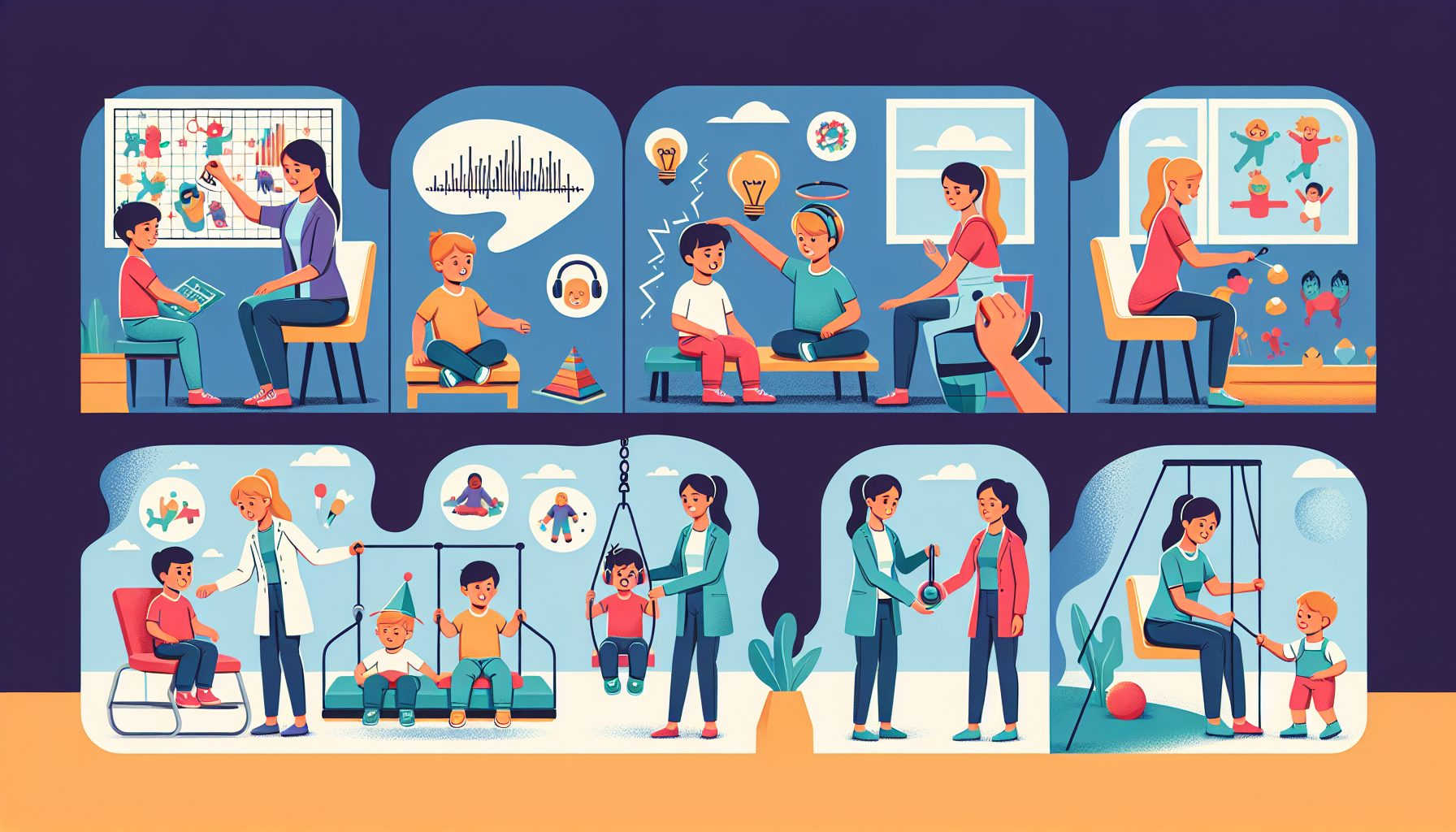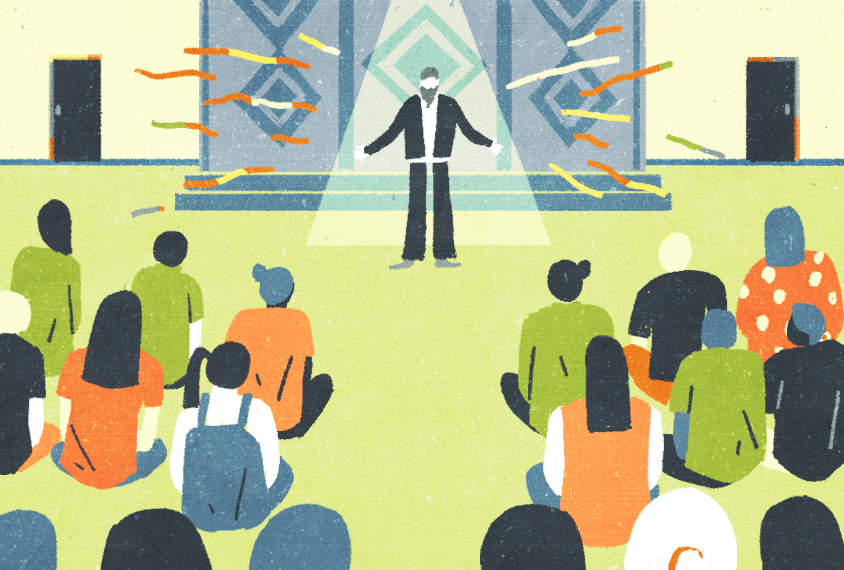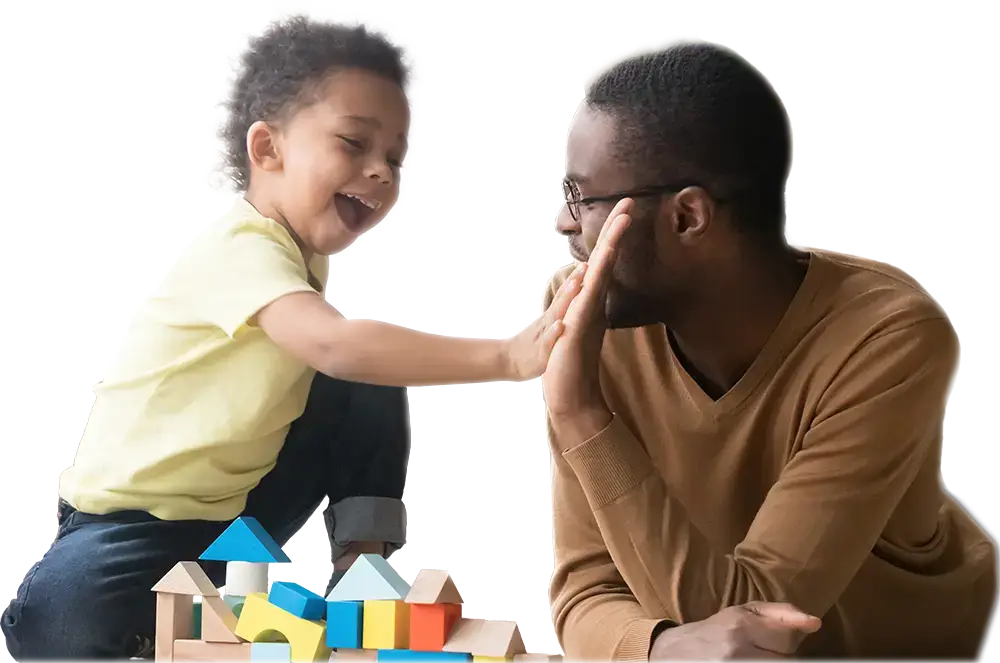When current autism therapies fall short, it is not a verdict on the child’s potential but a reflection of approaches that often prioritize compliance over connection. Raun K. Kaufman’s Son-Rise philosophy demonstrates the transformative power of love, parental empowerment, and joining a child’s world, while Jordan & Powell’s academic critique underscores the need for scientific validation, humility, and realistic expectations. The most responsible path forward is not choosing between hope and evidence but integrating both—creating therapeutic and social ecosystems where autistic individuals can thrive with dignity, inclusion, and sustainable support, a vision championed by MEDA Foundation.

When Autism Therapy Isn’t Working: Reframing Hope, Connection, and Evidence”
(Inspired by Raun K. Kaufman and integrating Jordan & Powell’s reflections on the Option Method)
1. Summary
Takeaway
When current autism therapies feel ineffective, it doesn’t mean hope is lost. It means we must pause, re-examine our assumptions, and ask whether our methods are aligned with the child’s humanity. Growth happens not by forcing conformity but by nurturing dignity, connection, and authentic engagement. Autism is not a puzzle to be solved—it is a life to be understood, respected, and empowered.
Why
Traditional therapies, however well-intentioned, often drift into a narrow focus on compliance. Children may learn to suppress behaviors, imitate scripts, or meet externally imposed benchmarks, but at the cost of emotional safety and genuine self-expression. This approach risks prioritizing what looks “normal” rather than what feels meaningful. In contrast, connection-based philosophies such as Raun K. Kaufman’s Son-Rise offer a radically different orientation—meeting the child where they are, embracing their uniqueness, and building trust through love and shared experience. Yet, such methods also invite critical scrutiny: they inspire, but they are not a panacea. Without careful evaluation, we risk swinging from rigid compliance to untested optimism.
What
This article explores three intertwined dimensions:
- Why current therapies may fall short—the pitfalls of compliance-driven, deficit-focused interventions.
- What Raun Kaufman’s philosophy proposes—joining, parental empowerment, and love as therapy.
- What Jordan & Powell (1993) caution—the need for critical reflection, evidence, and ethical communication when presenting methods like the Option (Son-Rise) Program.
Together, these perspectives form a more balanced lens: one that honors the power of love and hope while grounding decisions in evidence, humility, and realism.

2. Introduction: Intended Audience & Purpose
Intended Audience
This article is written for those who stand at the heart of autism care and advocacy: parents navigating daily uncertainties, caregivers who want to do more than manage symptoms, therapists and educators striving for approaches that respect individuality, policymakers tasked with shaping inclusive systems, and NGOs and communities committed to sustainable, compassionate solutions. Each of these groups shares a common challenge—how to support autistic individuals in ways that honor their dignity while fostering real opportunities for growth.
Purpose
The purpose of this article is fourfold:
- To examine limitations of current mainstream autism therapies.
Many established therapies have helped some children achieve functional gains, yet they often focus narrowly on reducing “problem behaviors” or enforcing compliance. This leaves families asking a painful question: if the therapy is working, why does my child still feel unseen? By identifying where these models fall short, we can open the door to richer, more humane possibilities. - To introduce Raun Kaufman’s Son-Rise philosophy.
Rooted in the story of Kaufman’s own transformation from severe autism, the Son-Rise approach reframes therapy as an act of love. Its cornerstone is joining—the practice of meeting a child in their world rather than dragging them into ours. By emphasizing parental empowerment, relational trust, and unconditional acceptance, Son-Rise challenges us to see autism not as a barrier but as a bridge waiting to be crossed. - To integrate Jordan & Powell’s (1993) academic critique of the Option Method.
While inspiring, the Son-Rise approach is not without its critics. Jordan and Powell highlight its lack of rigorous scientific validation, the ethical risks of promoting “cure” narratives, and its limited accessibility for many families. Including these reflections is not about discrediting Son-Rise—it is about ensuring that hope remains grounded in reality, and that inspiration is not mistaken for universal prescription. - To offer a balanced, forward-looking framework for autism support—where love meets evidence.
Ultimately, autism support must be both heart-led and evidence-informed. By weaving together the warmth of connection-based methods with the rigor of research and the responsibility of systemic planning, we can envision a model of care that is sustainable, inclusive, and deeply respectful of every autistic individual.
This dual lens of compassion and critique is what makes progress possible. Families deserve more than either blind faith in unproven cures or rigid adherence to outdated systems. They deserve hope that is both tender and trustworthy.

3. Why Current Autism Therapies May Be Failing Families
Autism therapies today are varied, ranging from behavioral interventions to speech and occupational therapy. Many have brought meaningful progress for children and families, yet for too many others, the experience feels hollow—like trying to fit a vibrant, unique child into a rigid mold. To understand why families often feel disheartened, we must look at the underlying assumptions shaping mainstream approaches.
Compliance vs. Connection
One of the most significant criticisms of conventional therapies, especially rigid forms of Applied Behavior Analysis (ABA), is their emphasis on compliance. The focus is often on making a child perform a “normal” behavior—sitting still, making eye contact, or following instructions—without considering whether these demands align with the child’s comfort, readiness, or inner world. While this can create the appearance of progress, it risks teaching children to suppress their natural ways of self-regulating. Compliance may look like success from the outside, but it does not necessarily build authentic connection or intrinsic motivation. Families are left wondering: Is my child thriving—or just performing?
Neglect of Emotional Safety
For many autistic individuals, the world is overwhelming. Bright lights, loud noises, and unpredictable social cues create constant sensory and emotional strain. Yet, therapeutic settings often ignore these realities. Demands to “sit still” or “stop stimming” may inadvertently amplify distress, leading to shutdowns, meltdowns, or resistance. Instead of creating a safe space for trust and growth, therapy can become another arena of struggle. When emotional safety is overlooked, progress is not sustainable—it is fragile at best.
Low Parental Agency
Parents are a child’s most consistent and powerful allies, yet many therapy models place them in a secondary role. Professionals deliver the “treatment,” while parents are expected to follow instructions or act as observers. This not only undermines parental confidence but also limits the child’s growth potential outside structured sessions. In contrast, approaches that empower parents as active co-therapists—teaching them how to connect, join, and nurture—often spark deeper transformation. Without this empowerment, families may feel stuck in cycles of dependency, with progress tied to external experts rather than rooted in the home environment.
Pessimistic Prognoses
For decades, parents have been told bleak narratives: that their child will never speak, never live independently, never form meaningful relationships. While medicine has moved toward a more nuanced understanding of autism, traces of this pessimism persist. Such prognoses can crush a family’s spirit before they even begin the journey. They also risk becoming self-fulfilling prophecies—limiting what professionals attempt and what parents believe is possible. Families deserve realistic information, yes, but they also deserve hope: the chance to envision growth, however modest or extraordinary, without the weight of predetermined ceilings.
At their core, these failures reflect a system that prioritizes visible outcomes over invisible humanity. For families, the message often lands as: Do more, achieve more, fit in better. What’s missing is the reminder that every child is already enough—worthy of love, belonging, and patience. Therapies should be bridges, not molds.

4. Raun K. Kaufman’s Son-Rise Philosophy
Origins
The Son-Rise philosophy traces its roots to one of the most widely publicized autism recovery stories. In the early 1970s, Barry Neil and Samahria Kaufman developed a home-based program for their son, Raun, who had been diagnosed with severe autism and deemed “hopeless” by professionals of the time. Instead of following conventional wisdom, they created an environment of radical acceptance and love, meeting Raun in his world rather than forcing him into theirs. Against all medical predictions, Raun went on to speak, attend mainstream schools, and eventually graduate from Brown University. Today, Raun K. Kaufman advocates for this approach worldwide, presenting it as a pathway for families seeking alternatives when traditional therapies fall short.
Core Principles
- Joining
At the heart of Son-Rise is joining—a practice where parents or caregivers enter the child’s world by imitating their repetitive behaviors, such as hand-flapping, spinning, or lining up toys. Instead of trying to stop these actions, joining them communicates: I accept you. I see you. I am with you. This reduces judgment, builds trust, and opens the door for shared moments of connection. For many parents, joining shifts the relationship from constant correction to genuine companionship. - Love First
Emotional connection is not an afterthought—it is the foundation for all growth. Son-Rise emphasizes creating a safe, joyful environment where the child feels valued and understood. The belief is simple but profound: a child learns best when they feel loved and secure. Progress is not measured solely in academic or behavioral milestones, but in the deepening of authentic human bonds. - Hopeful Possibility
Unlike the often grim prognoses parents hear from professionals, Son-Rise is rooted in optimism. Kaufman emphasizes that every child has the potential for growth, though not every journey will look the same. Importantly, he cautions against guarantees—hope is presented not as a promise of cure, but as an invitation to possibility. This stance helps families move from despair to determination, without slipping into denial. - Parent-Centered
Son-Rise empowers parents as central agents of change. Rather than being sidelined in favor of professionals, parents are trained to lead sessions, create engaging playrooms, and build daily practices around joining and connection. This not only maximizes the child’s opportunities for growth but also restores parents’ sense of agency, turning helplessness into active participation.
Innovations
- ACT Protocol (Autism Crisis Turnaround)
Meltdowns are often misunderstood as defiance, but Kaufman reframes them as signals of distress. The ACT Protocol offers a compassionate roadmap:- Cease Fire – Stop escalating demands or confrontations.
- Make Peace – Use a calm, reassuring tone to reduce tension.
- Eliminate Intensifiers – Remove sensory or emotional triggers making the situation worse.
- Nurture – Provide comfort in ways that feel genuinely loving to the child.
This framework helps parents shift from panic or frustration to empathy and effective intervention.
- Sensory & Pattern Understanding
Kaufman highlights two core challenges for autistic individuals:- Sensory Integration Difficulties – The autistic brain processes multiple inputs simultaneously, making environments overwhelming.
- Social Pattern Recognition – While neurotypical individuals easily detect patterns in social cues, autistic individuals may experience these as unpredictable and confusing.
By acknowledging these realities, Son-Rise encourages families to create environments that reduce overload and build predictable, trust-based interactions.
The Son-Rise philosophy resonates deeply with many families because it offers more than techniques—it offers hope wrapped in love. Yet, as inspiring as it is, it must also be held up to the light of evidence and critical reflection, which is where the insights of Jordan & Powell (1993) become vital.

5. Jordan & Powell (1993): Reflections and Critiques of the Option Method
In their seminal paper, Jordan and Powell (1993) offered one of the earliest academic reflections on the Option Method (also known as the Son-Rise Program). Their analysis remains valuable today because it combines acknowledgment of the approach’s appeal with a sober critique of its limitations. By situating their insights alongside Raun K. Kaufman’s advocacy, we can develop a more balanced understanding of what the method offers—and what it cannot yet claim.
Case Study Approach
The Option Method gained global recognition through Raun Kaufman’s story. His transformation from severe autism into what appeared to be full recovery became a beacon of hope for families worldwide. However, as Jordan and Powell emphasize, this narrative is based on a single case. While compelling, one success story—no matter how dramatic—does not constitute scientific proof. Without rigorous clinical trials and replicated results, it is difficult to separate what was unique to Raun, what may have been influenced by other factors, and what is truly attributable to the program itself.
Strengths Highlighted
- High Parental Involvement
The Option Method places parents at the center, giving them agency and responsibility in their child’s development. Jordan and Powell acknowledge that this alone can be therapeutic, as empowered parents often bring consistency, dedication, and hope into daily interactions. - Emotional Warmth and Optimism
Unlike therapies that lean heavily on correction or compliance, the Son-Rise approach creates an environment of joy, patience, and unconditional acceptance. Jordan and Powell note that such emotional climates can significantly reduce stress for both children and families, potentially fostering developmental gains. - Child-Led Pace
By following the child’s lead rather than imposing rigid goals, the program encourages autonomy and reduces coercion. This contrasts sharply with interventions that demand conformity to external standards, offering instead a more humane rhythm of growth.
Critical Concerns
- Scientific Validation
The most pressing concern is the lack of peer-reviewed, large-scale studies. The evidence supporting the Option Method is primarily anecdotal, making it difficult for professionals to endorse it confidently. Without data, there is no way to know whether outcomes are replicable or rare exceptions. - Ethical Question of “Cure”
Marketing the program as a potential cure risks reinforcing false hope. Families may invest enormous emotional and financial resources expecting transformation, only to experience disappointment. Jordan and Powell stress the importance of presenting Son-Rise as one possible pathway, not a guaranteed solution. - Selective Success
Even if some children show remarkable progress, others may not. The variability of outcomes raises important questions of generalizability: who benefits most, under what conditions, and why? Without systematic studies, these questions remain unanswered. - Cultural and Accessibility Barriers
Son-Rise is an intensive, home-based program that requires significant time, financial investment, and family commitment. For many families—particularly those in low-resource contexts—this model may be unrealistic. The very intensity that makes the program appealing to some can make it inaccessible to others.
Balanced View
Jordan and Powell conclude that while the Option Method has powerful emotional appeal and genuine strengths—particularly its focus on parental involvement and acceptance—it must be critically evaluated rather than mythologized. In their words, the program offers a philosophy of hope that deserves respect, but hope without evidence must always be handled with care.
Their reflection leaves us with a key insight: emotional warmth and connection are undeniably valuable, but they are not substitutes for scientific rigor. The true path forward is not to dismiss the Option Method outright, nor to elevate it to miracle status, but to recognize it as one approach among many—worthy of inspiration, yet requiring critical scrutiny.
6. Reconciling Love and Evidence: A Responsible Path Forward
The tension between Raun K. Kaufman’s Son-Rise philosophy and Jordan & Powell’s critique reveals a central challenge in autism support: how do we honor love and hope without neglecting rigor and realism? The way forward is not an “either–or” choice, but a synthesis. Families, practitioners, and policymakers can chart a responsible path by weaving relational practices with evidence-based strategies, anchoring hope in ethics, and creating ecosystems that support autistic dignity for the long haul.
Subtopic A: Embrace Relational Practices Without Abandoning Science
- Why it matters: Kaufman’s principle of “joining” demonstrates the power of empathy, presence, and emotional safety. But compassion must not come at the expense of proven methods.
- Action: Adopt “joining” as a practice of radical empathy—entering the child’s world without judgment—while also integrating scientifically validated approaches such as Cognitive Behavioral Therapy (for anxiety), speech and language therapy, and structured social skills training. Love and data are not competitors; they are allies when thoughtfully combined.
Subtopic B: Ethical Hope vs. False Promises
- Why it matters: Families need hope, but uncritical promises of “cure” can leave lasting harm.
- Action: Present case studies like Raun Kaufman’s as possibilities, not prescriptions. Set growth-oriented goals that emphasize quality of life, authentic self-expression, and meaningful engagement—not the erasure of autism. By reframing success as thriving (not “recovering”), hope becomes ethical and sustainable.
Subtopic C: Re-Empower Parents and Families
- Why it matters: Parents are not passive consumers of professional expertise; they are lifelong companions in their child’s journey.
- Action: Train parents as co-therapists, equipping them with practical tools they can apply daily. Create peer-led support groups where families exchange wisdom, encouragement, and strategies. This not only builds confidence but also lightens the emotional burden of isolation.
Subtopic D: Contextualize Cultural Realities
- Why it matters: Not every family can afford intensive, home-based programs. In countries like India, resource constraints, stigma, and rural realities must be factored into intervention design.
- Action: Adapt interventions to local contexts by developing scalable, low-cost practices rooted in love and community. Examples include play-based therapy groups in villages, parent-led sensory-friendly classrooms, and NGO-led workshops that blend cultural sensitivity with best practices.
Subtopic E: Systemic Ecosystem Building
- Why it matters: Autism is not just a childhood issue. Support must span education, employment, and lifelong inclusion. Therapy alone cannot ensure dignity without broader systemic scaffolding.
- Action: Build ecosystems that go beyond clinical interventions. Schools must embrace inclusive education; employers must offer structured pathways into meaningful work; and societies must normalize neurodiversity. At MEDA Foundation, our vision is precisely this—sustainable, community-driven ecosystems where autistic individuals are not just supported but celebrated.

7. Conclusion: Love Anchored in Evidence
Current autism therapies may not always work—not because autistic children cannot grow, but because too often, the approaches miss what is most fundamentally human: love, dignity, connection, and trust. Families deserve more than rigid protocols and compliance-driven metrics; they deserve pathways that recognize their children as whole beings with potential, not deficits to be managed.
Raun K. Kaufman’s Son-Rise philosophy shines as a beacon of hope, reminding us of the transformative power of emotional connection and parental empowerment. At the same time, Jordan & Powell (1993) remind us that hope must walk hand-in-hand with evidence, humility, and scientific rigor. When these voices are brought together, the lesson is clear: the future of autism support lies not in choosing one method over another, but in integrating the warmth of love with the clarity of science.
The call to action is not just for families, but for societies:
- To reimagine autism beyond therapy and toward sustainable inclusion.
- To empower parents as central figures in their child’s development.
- To build ecosystems that extend into education, employment, and community belonging.
At MEDA Foundation, this is our mission. We invite you to participate and donate—to help us co-create ecosystems where autistic individuals don’t just survive within therapy rooms but thrive in meaningful, connected, and sustainable lives.
Book & Research References
- Kaufman, Barry Neil. Son-Rise: The Miracle Continues (1994).
- Kaufman, Raun K. Autism Breakthrough (2014).
- Jordan, R., & Powell, S. (1993). Reflections of the Option Method as a Treatment for Autism.
- Peer-reviewed studies on Cognitive Behavioral Therapy (CBT) and autism interventions (e.g., PubMed meta-analyses).









